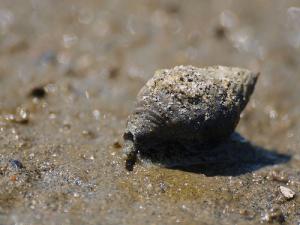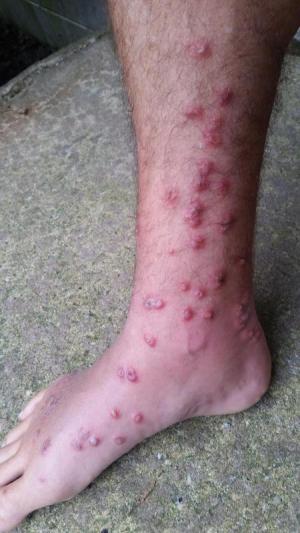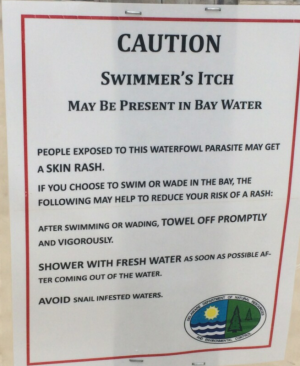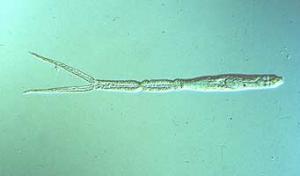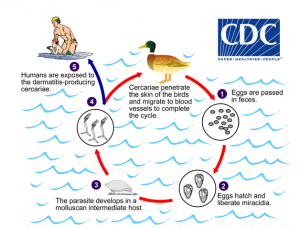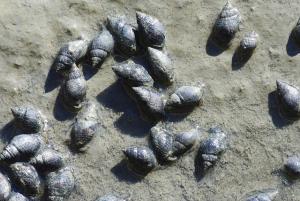Fisherman warns of swimmer's itch
Georgetown resident Floyd “Morty” Morton had just finished catching bait when his feet began to tingle.
He suspected he had contracted swimmer's itch while wading in the shallow bay water between the fishing pier and The Point at Cape Henlopen State Park. He prayed he was wrong.
Turns out, unfortunately, he was right.
“By the next morning, I started getting red bumps,” he said. “The second day it turned to welts with a little pus.”
Swimmer's itch, also known as clam digger’s itch, is caused by a microscopic parasite. It originates in a bird and spreads to the water by bird droppings. The parasite gets taken up by a snail – the mud snail in Delaware waters – where it develops and is released. Humans are not an appropriate host for the parasite, so they die after burrowing in the skin.
At Cape Henlopen, the small, brown snail can often be seen crawling around in the mud by the thousands, said University of Delaware Professor Patrick Gaffney. The snails host several parasites, but there is only one that can penetrate human skin and cause an allergic reaction, he said.
“It's just bad luck if you happen to be exposed to them,” Gaffney said. His students collected a slew of snails over the summer and found only a few with the parasite.
“They're creepy little things,” he said, describing them as smaller than the head of a pin, with bristles and a forked tail.
Morton said he had noticed snails in the water where he was catching mullet, and, in hindsight, definitely should have thrown on a pair of waders.
“I should have known better,” the mechanic said. This is Morton's third time catching swimmer's itch, he said, and it's the worst case he's ever experienced.
His doctor was concerned the bubbling pockets of pus were getting infected, Morton said, so he is on antibiotics, steroids and was told he should stay off his feet. Like many allergic reactions, each time a person is exposed, the reaction can worsen, according to the Centers for Disease Control and Prevention.
The itchy, painful, pimple-like blisters caused by the parasite boring into exposed skin will last at least a week.
“People just need to know about this,” said Morton, who is warning people of the parasites through the Delaware Brethren of the Coast Facebook page. “If somebody can gain from my pain, it's a win.”
Gaffney said swimmer's itch isn't terribly common, and not all mud snails carry the pain- and itch-inducing parasite. It's possible Morton was in the wrong place at the wrong time.
“It's similar to chiggers, which drives everyone crazy,” he said.
A spokesman with the Department of Natural Resources and Environmental Control said Sept. 26 signage would be posted in the area warning of the potential for swimmer's itch. People should avoid the area while signs are posted, wear waders and make sure to thoroughly rinse exposed skin after getting out of the water to avoid catching swimmer's itch.














